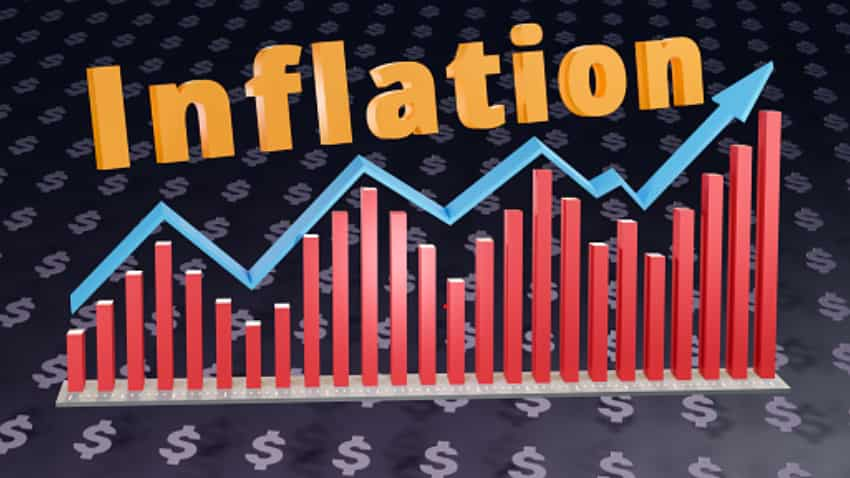Introduction: Rajkotupdates.News : Us Inflation Jumped 7.5 In In 40 Years
Inflation is a critical economic indicator that measures the rate at which prices for goods and services rise over time, eroding the purchasing power of money. Recently, the United States has seen a significant increase in inflation, with a notable 7.5% rise observed over the span of 40 years. This trend has sparked discussions and concerns among economists, policymakers, and the general public alike. In this comprehensive guide, we delve into the factors contributing to this inflationary trend, its impact on various sectors of the economy, and what it means for consumers and businesses.
What is Inflation?
Inflation refers to the general increase in prices of goods and services in an economy over a period of time. It is typically measured as an annual percentage change in the Consumer Price Index (CPI) or the Producer Price Index (PPI), which track the prices of a basket of goods and services commonly purchased by households or businesses.
Key Points:
- Causes of Inflation: Inflation can be caused by various factors, including increases in demand relative to supply (demand-pull inflation), rising production costs (cost-push inflation), changes in government policies, and external factors such as international trade and geopolitical events.
- Types of Inflation: Different types include creeping inflation (low and steady rise), galloping inflation (rapid rise), hyperinflation (extreme and out-of-control rise), and stagflation (high inflation coupled with stagnant economic growth).
- Effects of Inflation: Inflation affects consumers by reducing the purchasing power of money, impacting savings, investments, and overall economic stability.
US Inflation Trends Over 40 Years
The 7.5% jump in US inflation over a 40-year period reflects a steady but significant increase in the cost of living and economic pressures. Let’s explore the historical context, trends, and implications of this inflationary trend:
Historical Context:
- 1970s Stagflation: The US experienced high inflation rates during the 1970s due to oil price shocks, wage-price spirals, and monetary policy challenges.
- 1980s-1990s Moderation: Inflation rates moderated in the following decades due to tighter monetary policies, globalization, and technological advancements.
- 2008 Financial Crisis: The global financial crisis of 2008 led to a brief period of deflationary pressures followed by efforts to stimulate economic recovery through monetary easing.
- Post-2010s Recovery and Resurgence: Inflation rates have shown fluctuations, with recent years witnessing a resurgence influenced by factors such as supply chain disruptions, labor market dynamics, and fiscal stimulus measures.
Trends and Factors:
- Current Inflationary Pressures: Recent factors contributing to inflation include supply chain disruptions, rising energy and commodity prices, labor shortages, and increased demand post-pandemic.
- Federal Reserve Policy: The Federal Reserve plays a crucial role in managing inflation through monetary policy tools such as interest rate adjustments, quantitative easing, and forward guidance.
- Global Influences: Inflation trends in the US are also influenced by global economic conditions, trade dynamics, and geopolitical events.
Impact of Inflation
The 7.5% increase in inflation over 40 years has wide-ranging implications across various sectors of the economy:
Consumer Impact:
- Purchasing Power: Consumers experience reduced purchasing power as prices rise faster than incomes.
- Cost of Living: Higher inflation increases the cost of essential goods and services, impacting household budgets and standards of living.
- Savings and Investments: Inflation erodes the real value of savings and investments, prompting adjustments in investment strategies and financial planning.
Business Impact:
- Costs and Pricing: Businesses face higher production costs, potentially leading to price increases for consumers.
- Profitability: Inflationary pressures can impact profit margins and operational efficiency.
- Adaptation Strategies: Businesses may adjust pricing strategies, optimize supply chains, and innovate to mitigate inflationary impacts.
Economic Policy and Response:
- Monetary Policy: The Federal Reserve adjusts interest rates and implements monetary policy measures to stabilize inflation and support economic growth.
- Fiscal Policy: Government interventions, such as fiscal stimulus packages and taxation policies, aim to manage inflation while promoting economic stability.
- Public Perception and Confidence: Inflationary trends can influence consumer and investor confidence, impacting spending, investment, and overall economic sentiment.
Addressing Inflationary Challenges
To address the challenges posed by inflation, policymakers, businesses, and individuals can consider various strategies:
- Policy Coordination: Effective coordination between monetary and fiscal policies to achieve price stability and sustainable economic growth.
- Supply Chain Resilience: Enhancing supply chain resilience and flexibility to mitigate disruptions and manage costs.
- Investment in Innovation: Promoting innovation and productivity enhancements to support economic competitiveness and efficiency.
- Consumer Education: Educating consumers about inflation, budgeting strategies, and financial planning to navigate economic uncertainties.
Conclusion
The 7.5% increase in US inflation over 40 years underscores the dynamic nature of economic trends and challenges. Understanding the causes, trends, and impacts of inflation is essential for informed decision-making by policymakers, businesses, and individuals alike. By adopting proactive strategies and policies, stakeholders can navigate inflationary pressures, promote economic resilience, and foster sustainable growth in the years ahead.

